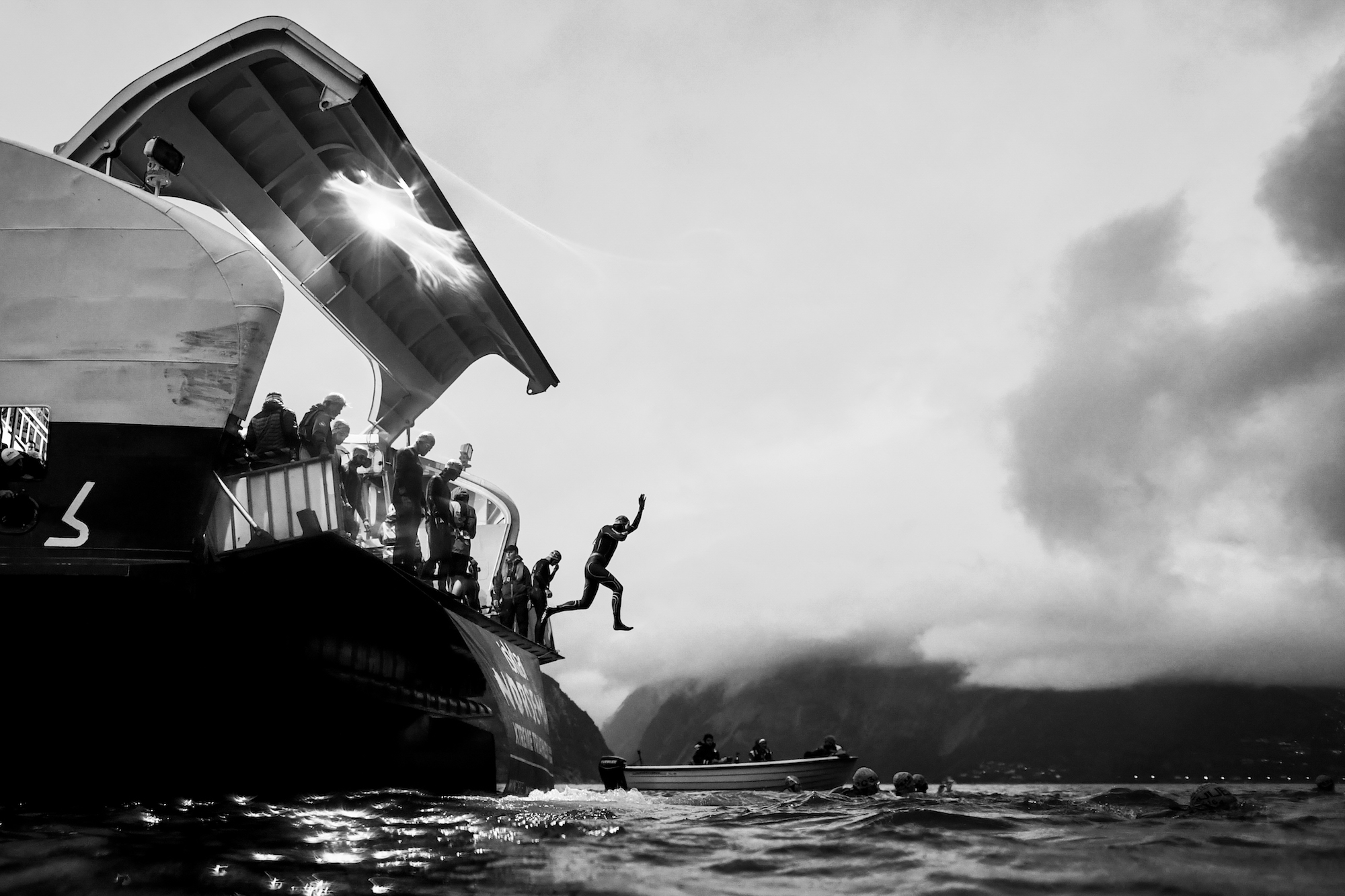
Published: 07.Apr.2013
Swimming in cold water – Part 1
The Norseman swim is legendary. Everybody has heard about the jump from the ferry into the dark, deep fjord, surrounded by hovering, snow clad mountains in the most serenely beautiful of landscapes. If only it wasn’t for the cold water.
The water in Eidfjord is always cold
Open water swimming is a wonderful experience. But for those of us that live closer to the North Pole than to the Equator, it is also often a cold experience. Water temperature is one of the most talked about topics in Eidfjord in the days before the Norseman. However warm the day is, the water in Eidfjord is almost never more than 16-17°C (62°F). In fact, the warmer the air, the colder the water.
Eidfjord is surrounded by snow clad mountains, and when the air is warm, more snow will be melting. This cold freshwater will remain in the upper layers of the fjord, which on warm days can be very cold. However, the temperature can fluctuate substantially from one spot to the next. Areas around river outlets are always colder. And in the inner fjord, rivers are never far apart, so don’t count on hitting a warmer pocket where you can catch your breath.
Eidfjord is also one of Norway’s major hydropower production sites, and power production also impacts water temperatures. When the power stations run full throttle, large amounts of cold mountain water is discharged into the fjord. Unfortunately, this production is not controlled by Norseman, but by the price of electricity in Europe. Hence, expect cold water in Eidfjord, and be prepared for varying temperatures on the swim leg. The average water temperature on race day is 13-15°C (57°F).
Is swimming in cold water dangerous?
Apart from some studies that were performed under questionable ethical standards by the Nazis during World War II, and hold no current scientific value, few studies have been completed about the risk of cold water swimming. There are, however, some major studies concerning the general risk of dying during a triathlon. A large US study looked at triathlon fatalities between 1985 and 2016. (https://doi.org/10.7326/M17-0847) They identified 135 race-related deaths. 67% of fatalities happened on the swim leg, and most of these triathlons did not take place in especially cold water.
What this finding might indicate, is that if you are having problems while you are in the water, consequences can be serious or fatal, even with the best safety precautions imaginable. Fatalities can happen for several reasons during a triathlon swim leg, but in most cases are caused by underlying heart problems.
Norseman Xtreme Triathlon has been going on since 2003. So far, we have been spared serious incidents on the swim leg. Norway had its first fatality during a triathlon in 2015 at TriQuart in Kristiansand. ( https://www.newsinenglish.no/2015/08/03/airport-chief-died-during-a-triathlon/)
Losing consciousness while in the water will always be dangerous. Although rescue teams are on the alert, coming to the rescue of an athlete in trouble will always take some time. During that time, water can get into the lungs and cause drowning.
So, why can swimming in cold water be dangerous, and how can you prepare yourself?
In our next article, we will look at what issues cold water swimming entails, and which precautions you can take to best avoid accidents while in the water.

